A Studio Visit and Interview with Artist Marcela Díaz Alvarado
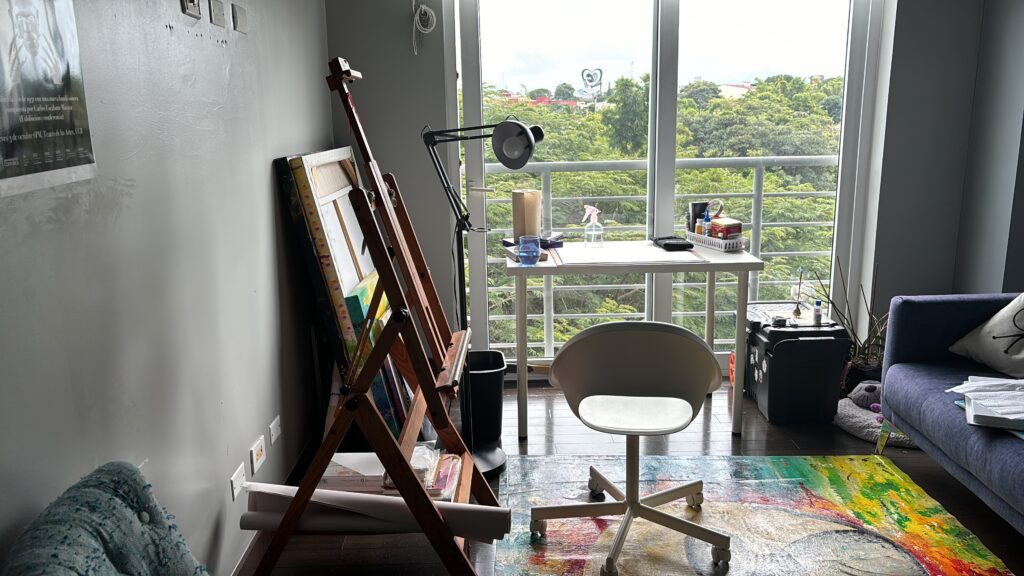
We are launching a new series of studio visit interviews on the Women in Arts Network, where artists will give us a virtual tour of their workspaces and share their creative processes within them. For this first conversation, Costa Rican artist Marcela Díaz Alvarado welcomes us into her studio, which she has set up in her home.
Marcela paints primarily with watercolour and ink, guided by breath, gesture, and the movement of water on paper. In this interview, Marcela takes us through the small room where she spends much of her time: the first thing you notice when you step inside is her easel under a warm lamp, a desk for sketching, and works in progress leaning gently against the wall. Light fills the space during the day, while in the evenings, the atmosphere changes, shaped by the glow of a lamp and the quiet company of her cats.
She describes how the room smells of paper, water jars, and, at times, incense or candle smoke, turning ordinary preparation into a ritual before painting. Marcela speaks openly about how she organises her space, how she moves from one painting to another, and why she prefers to keep things simple and close at hand. This conversation is not only a tour of her studio but also a window into the rhythm of her days, the tools she relies on, and the way she imagines a future space surrounded by nature.

Marcela Díaz Alvarado is a Costa Rican visual artist working primarily in abstraction through watercolour, ink, and acrylics on paper and canvas. With a background in International Relations and over two decades of leadership in business creation, she has cultivated an artistic path that merges discipline with emotional depth. Her work has been featured in exhibitions across Europe, the United States, and Latin America, including Holy Art Gallery (Berlin, London, Athens), Musea (California), ExpoMetro (New York), and the Modern Art Fair in Barcelona. She has also exhibited in Costa Rican galleries such as Galería Talentum and Casa Roosevelt. Her paintings have been published in Artist Talk Mag (London), and in 2023, she received the Golden Time Talent UK Award for Abstract Painting. In addition to her visual practice, she is the author of the Kindle essay Pintar desde el alma: Diálogos con Kandinsky, Klee, Jung y mi propia sombra, where she explores the intersections of art, psychology, and spirituality.
1. Can you walk us through your studio space? What’s the first thing you see when you walk in?
When I walk into my studio — a secondary room in my apartment — the first thing I see is my easel under the lamp, surrounded by papers, brushes, and works in progress leaning against the wall. On the opposite side, a white desk offers space for sketching, planning, or simply letting ideas flow. During the day, the room is filled with natural light, making the space feel open and alive. It is also the cats’ room, so my creative process unfolds alongside their quiet presence. I love that the studio is both practical and intimate — a place where everyday life, animals, and art coexist, and where breath and color come together on the paper.
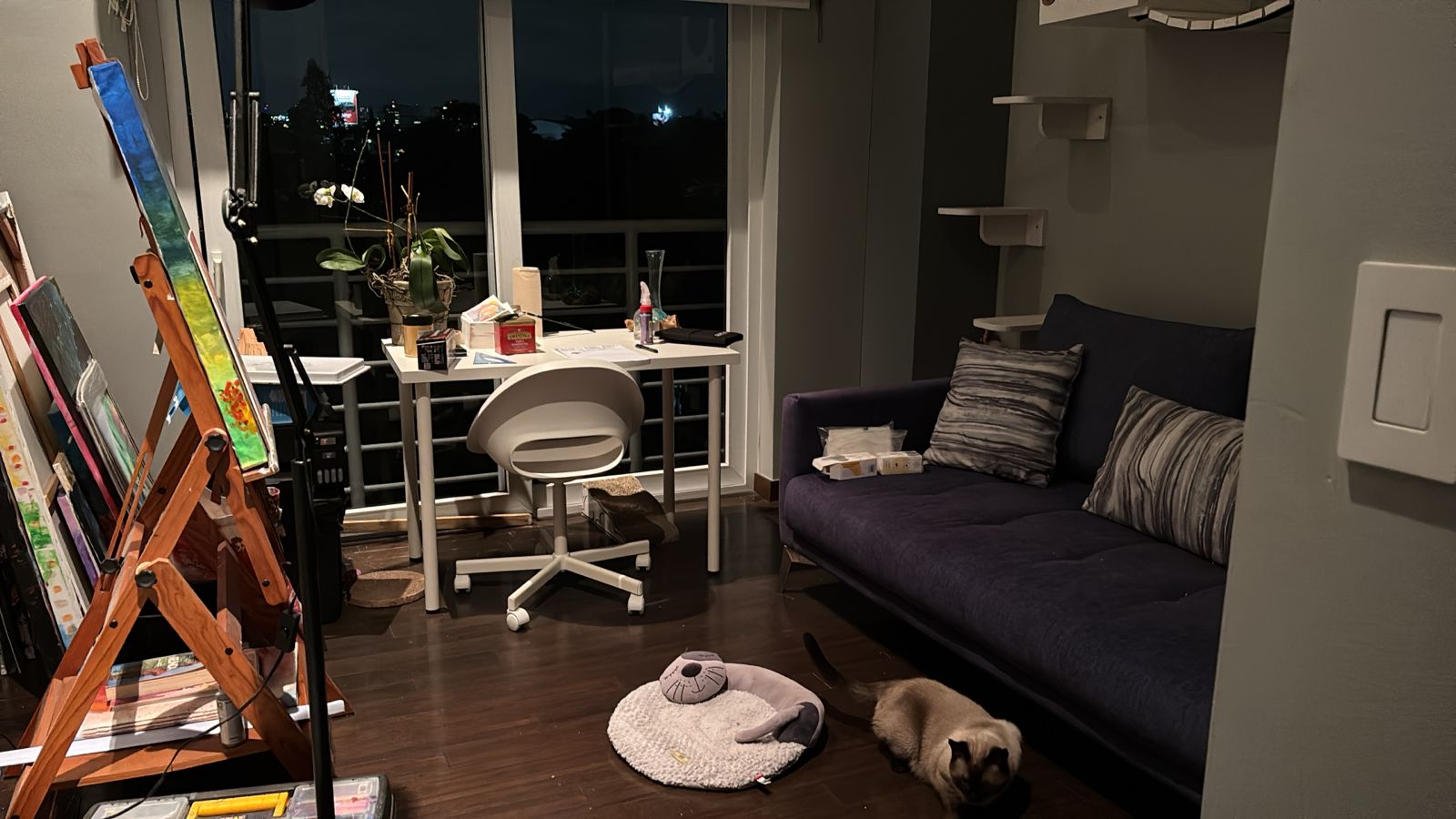
2. How is the space arranged to support the way you like to work on a painting from start to finish?
The space is arranged in an efficient way to support how I work with watercolour and ink. I usually use the large table to stretch my paper, prepare water jars, and keep brushes and pigments within easy reach. My easel can also be adjusted to a flat position, so I often use it as an extra working surface or to hold my materials while I paint. Finished and in-progress works rest against the wall, allowing me to review them during the process and let them influence new pieces. The sofa and open floor space will enable me to step back and view the work from a distance, which is essential when deciding if a painting is complete. This arrangement is flexible but straightforward: everything I need is close by, and the studio adapts to the fluid, layered way I like to build a painting from beginning to end.
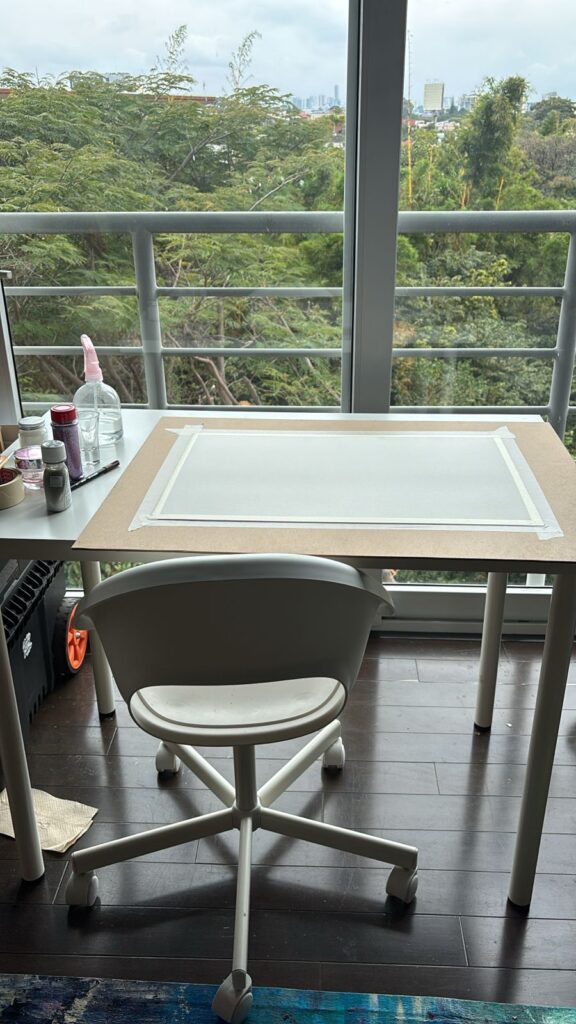
3. What materials or tools do you keep closest to you while working?
The tools I keep closest to me are always straightforward but essential: brushes of different sizes, two jars of water, and a spray bottle to keep the paper alive and fluid. I work with a palette of watercolours and small bottles of liquid watercolour, which allow me to layer transparencies and create flowing effects. Sometimes I add a touch of shimmering mica powder or glitter, bringing a subtle light to the surface. Having these materials within arm’s reach makes the process feel spontaneous — everything I need is right there to respond to the movement of breath and water as the painting unfolds.
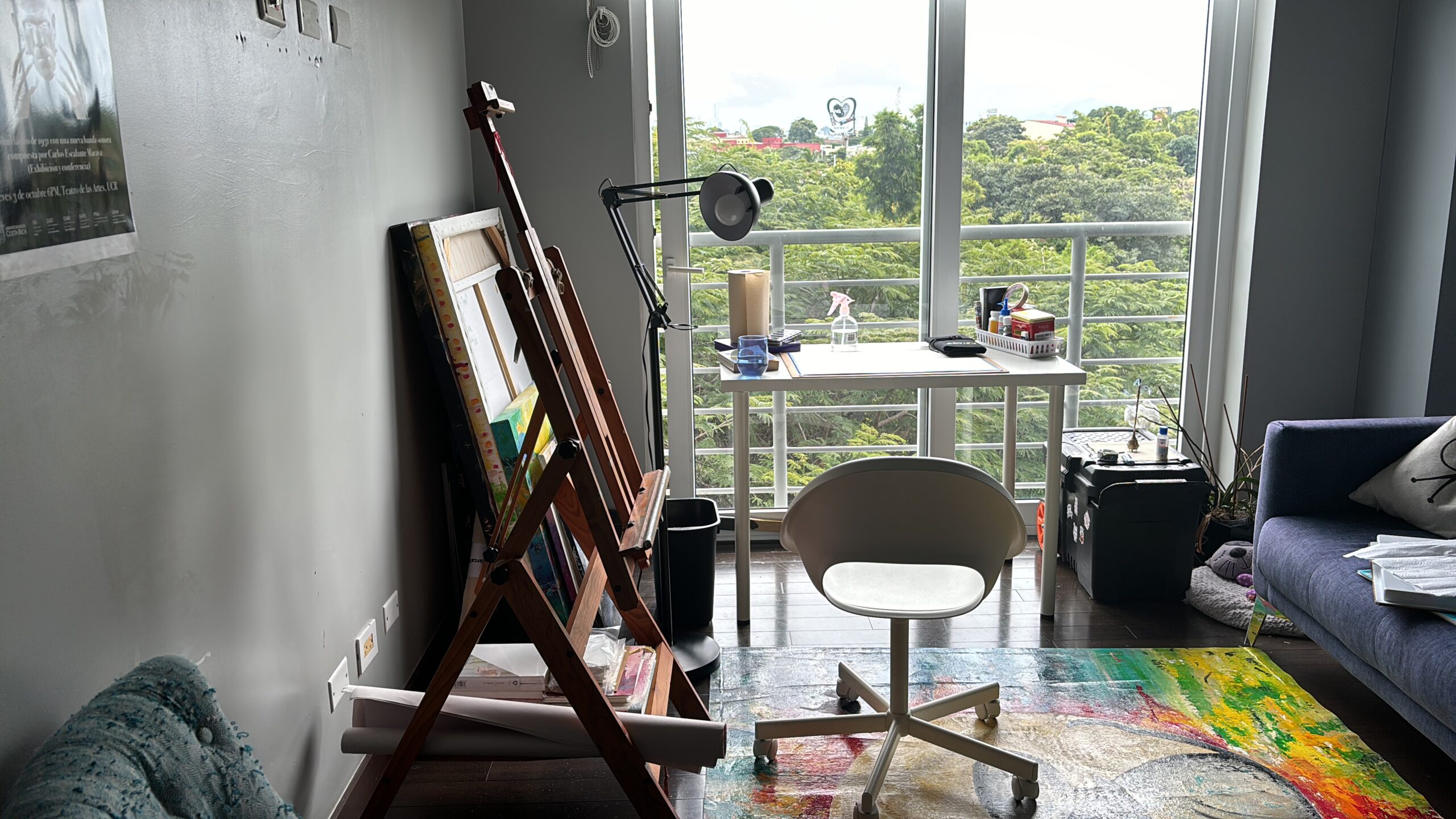
4. Are there certain books, film stills, or notes that stay in the studio as part of your process?
I don’t usually keep books or film stills in my studio. My process is very immediate and relies more on water, colour, and breath than on external references. Sometimes I write short reflections or sketches in a small notebook, but most of the time I keep it by my bedside rather than in the studio. For me, the studio itself — the light, the silence, the presence of my cats — becomes the reference point. It’s less about bringing in outside material and more about listening inward and letting emotions guide the work.
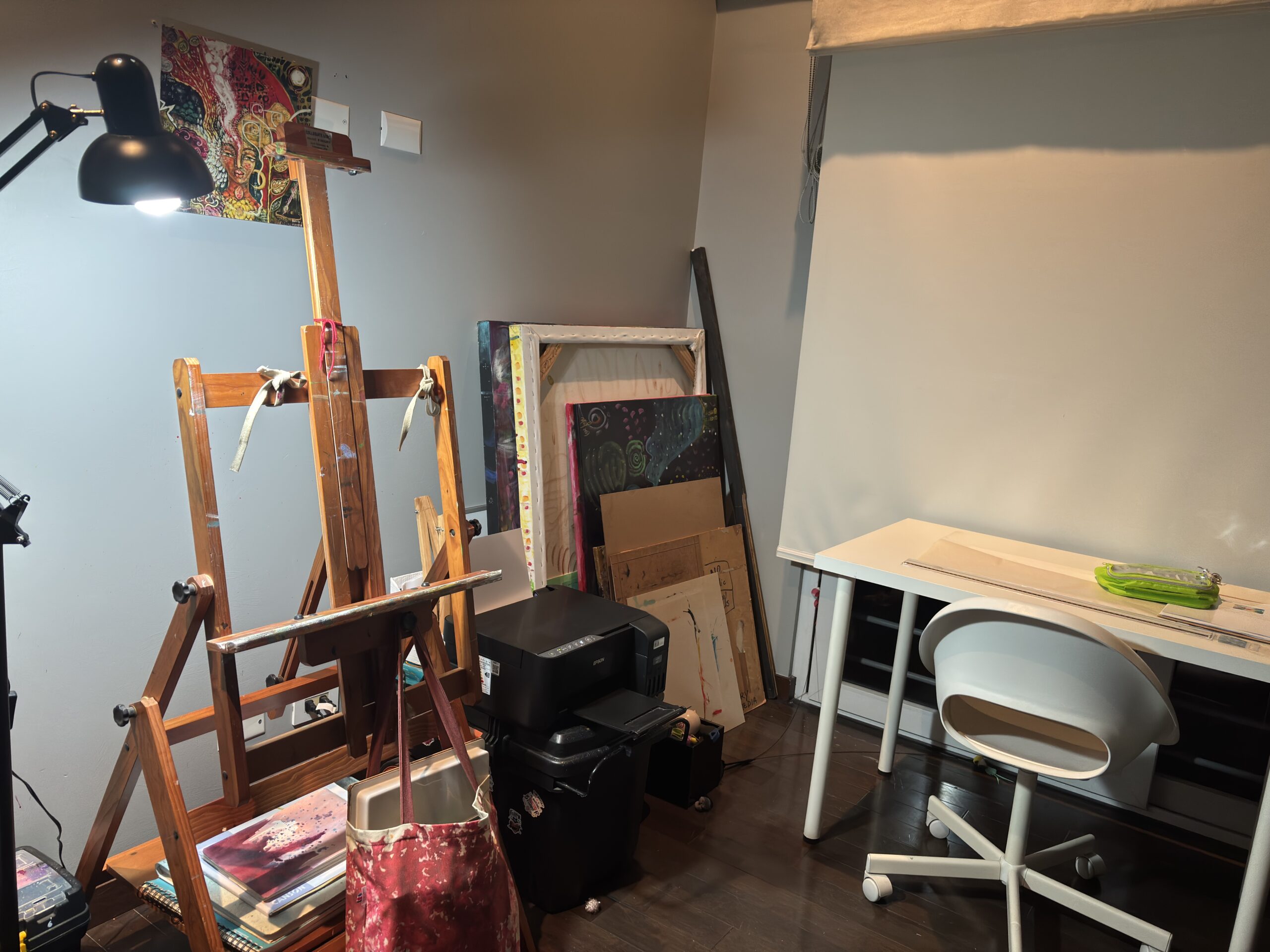
5. How do you usually keep track of ideas as they move from your journals into the canvas?
I don’t really move ideas from journals onto the canvas. For me, painting begins with what wants to emerge in the moment rather than a fixed plan. Sometimes I study colours beforehand — knowing I want to explore yellow, or violet, or trying out a new material on a small test sheet — but the real work happens spontaneously as I paint. Writing usually comes afterwards, as a way of reflecting on what appeared on the paper. In that sense, the process is less about tracking ideas and more about letting the painting reveal its own truth, and then finding words to accompany it.
6. What does a typical day in this studio look like for you?
A typical day in my studio begins with small rituals: preparing watercolour paper, brushes, and jars of water, then taking a moment to bless the water. I often light a candle or incense, and sometimes put on music to set the mood. My cats usually join me, making the space feel alive and comforting. I don’t paint every day, and sometimes the work unfolds at night rather than in the daylight. Because the studio can get very warm, I often move to the dining table, where I also have more space to spread out. Wherever and whenever I paint, the rhythm is the same: prepare, breathe, bless, and let the ink and water move freely. These gestures turn painting into both a creative practice and a spiritual offering.
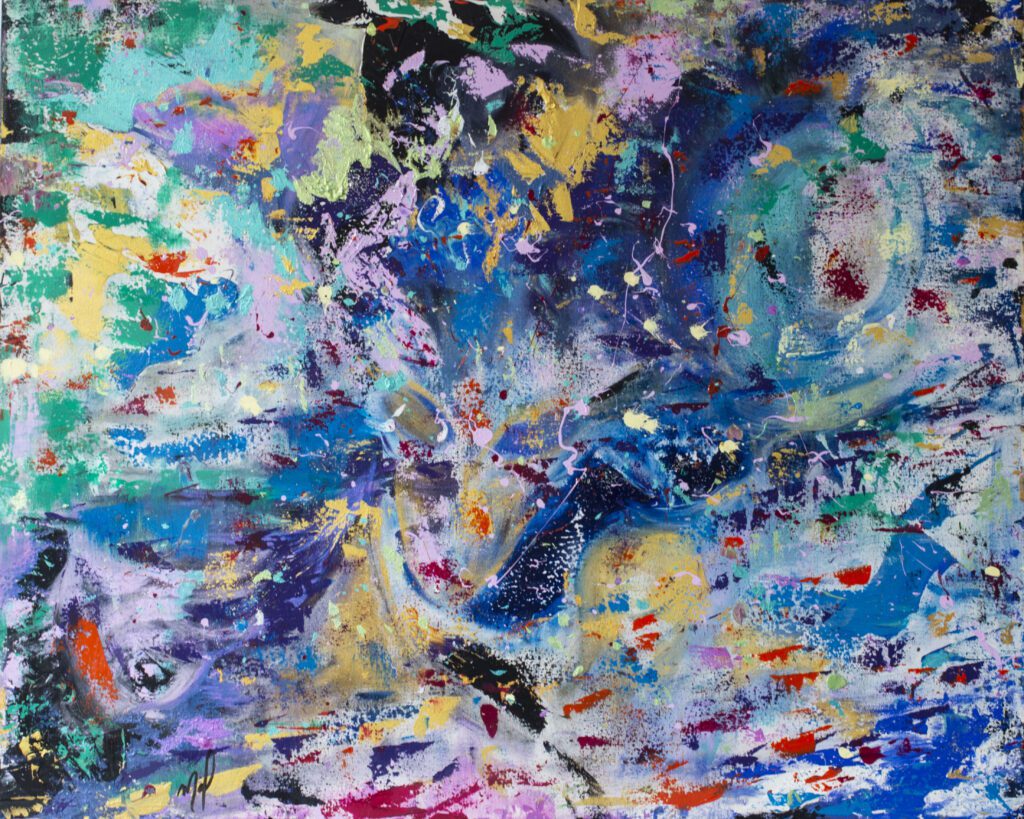
7. How does the light in this space change the way you approach a painting?
I prefer to paint during the day, when natural light allows me to perceive colour more fully and clearly. Many times, I even leave work as early as possible to catch those last hours of daylight, because it makes the process feel open and alive. At night, I sometimes work under a lamp, but it is usually driven more by the need for expression than by the desire to create a piece with balanced colours. Daylight supports the harmony of tones, while nighttime painting carries a different urgency—one that is more raw, emotional, and immediate.
8. Do you have works in progress visible around the room, or do you prefer to focus on one piece at a time?
I don’t usually keep works in progress visible around the room. With watercolour, the paper is delicate, and I prefer to store each piece safely in a large portfolio folder. Part of this is practical — my cats share the studio with me, and I don’t want them stepping on the paintings — but it’s also about focus. I like to give my full attention to one piece at a time. Once it’s dry and complete, I put it away and clear the space, so each new painting begins with a sense of freshness.
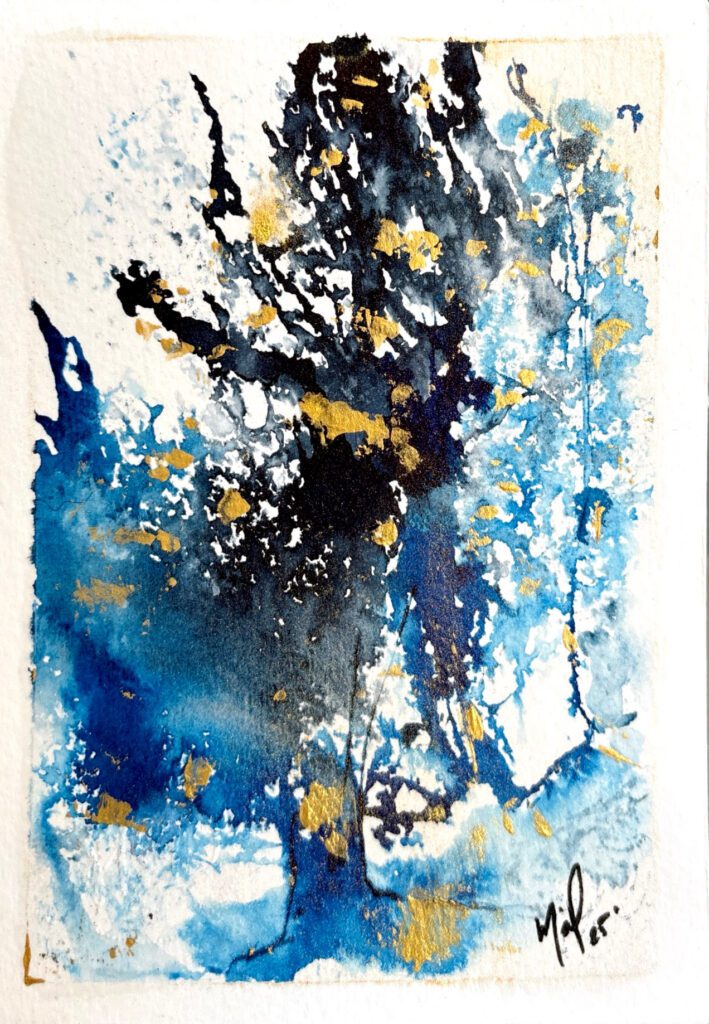
9. Is there a spot in the studio where you usually pause to step back and look at the work differently?
Yes — I like to sit on the sofa in my studio and look at the work from a distance. I usually place the watercolour on the easel, adjusting it so it can hold the paper upright. From there, I can step back, breathe, and see the painting differently, noticing details or balances that I might have missed while working so closely. That pause on the sofa has become part of the process: it gives me perspective and helps me decide whether the piece needs more layers or if it is complete.
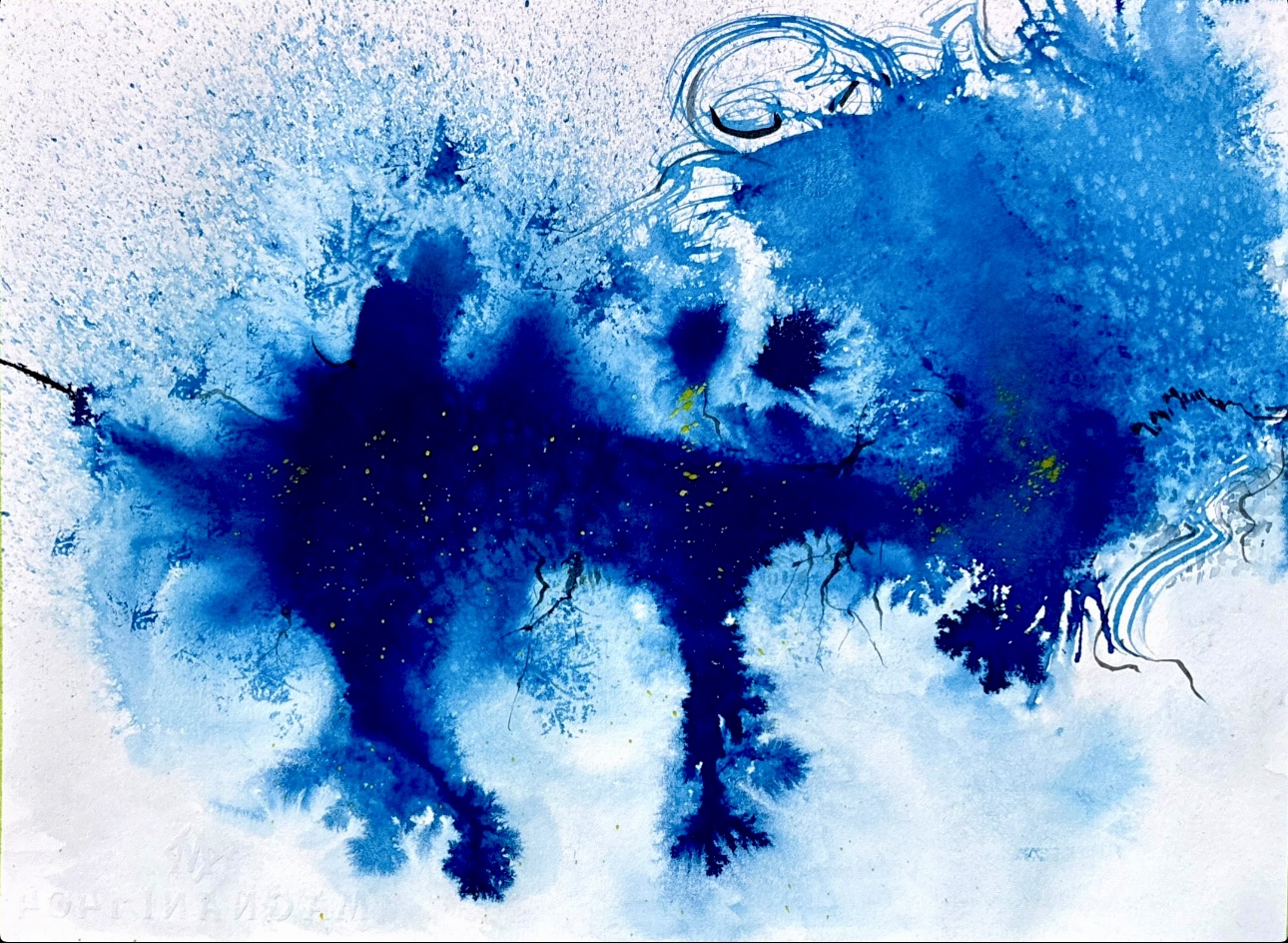
10. If you get a chance to set up your studio anywhere in the world, where would it be?
If I could set up my studio anywhere in the world, it would still be here in Costa Rica. I imagine a space surrounded by nature, with large windows on every side and a garden just outside the door. Natural light, fresh air, and the sound of birds would flow into the studio, creating a space where painting feels like a conversation with the environment. It wouldn’t need to be grand, just open, green, and alive.
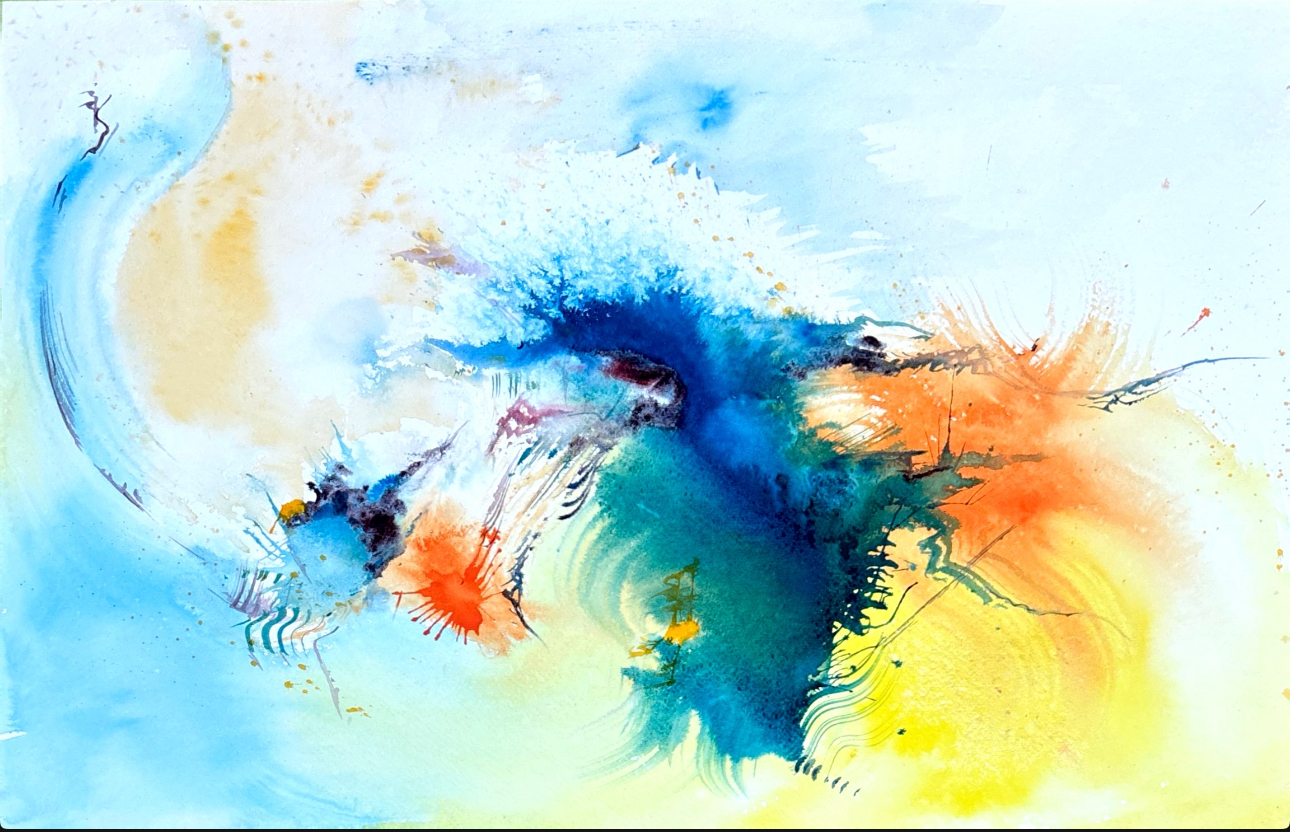
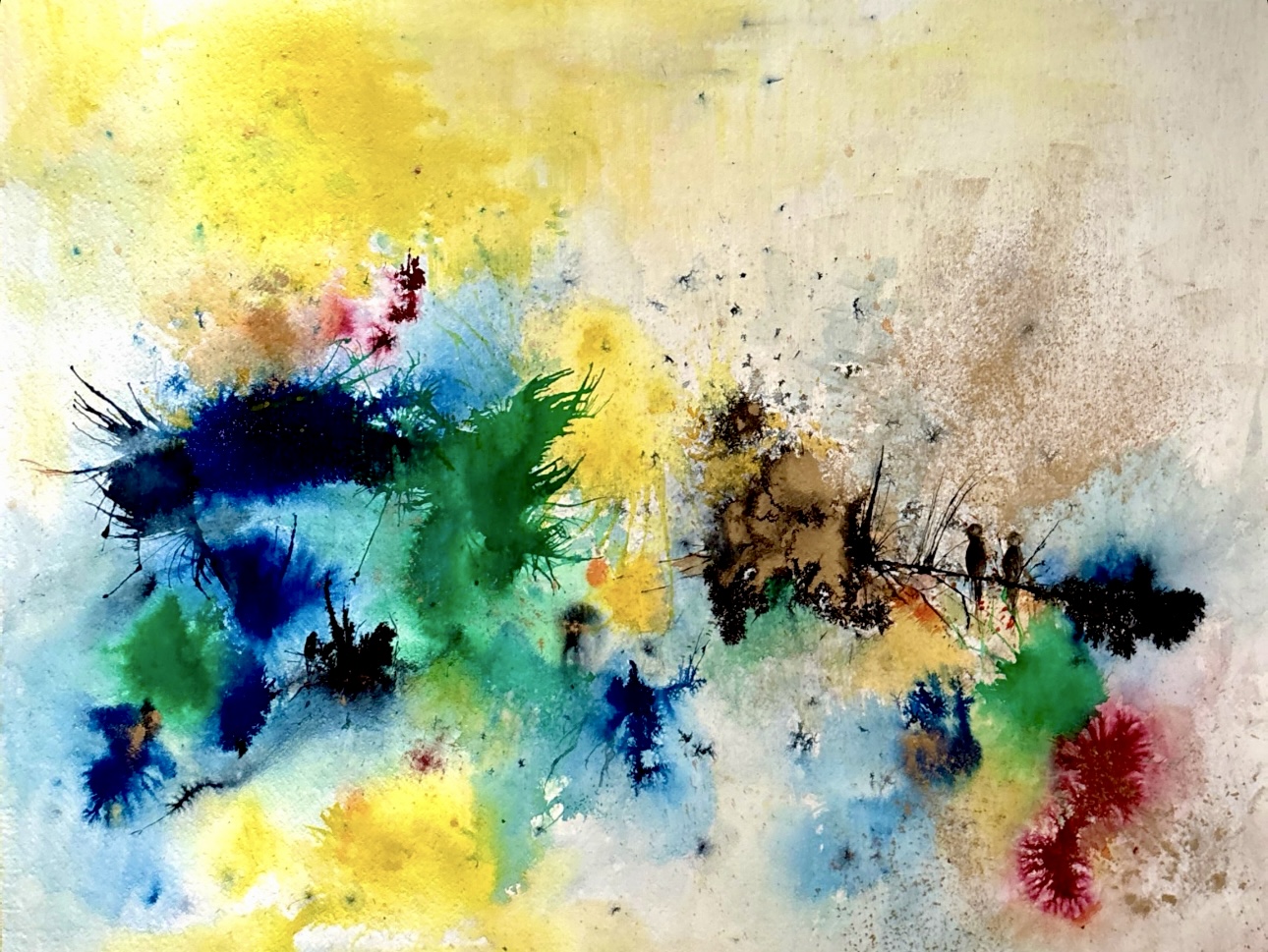
Stepping out of Marcela’s studio, what lingers is the quiet atmosphere she has built around her practice. The room feels calm and grounded, carrying the scent of water, paper, and the occasional trace of incense. Light shifts gently through the day, her cats wander in and out, and the space holds both focus and ease.
It is a place where the small rituals of preparing brushes and blessing the water carry as much meaning as the paintings themselves. Ending our visit, one has the sense that this studio is less about walls and furniture and more about creating the right conditions for painting to flow naturally, with breath and colour leading the way.
To learn more about Marcela, visit the links below.
